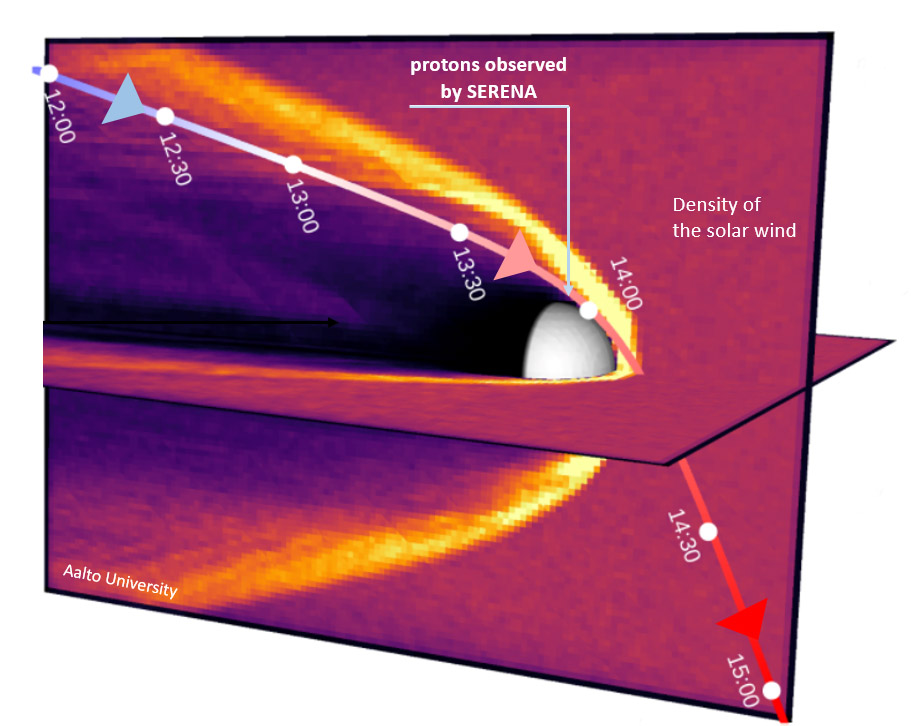

The second flyby at Venus was successfully completed on August 10th 2021.
The SERENA sensors PICAM and MIPA were switched on 34 hours before closest approach (CA), as planned, when Bepi was approaching from the tail, and up to 6 hours after CA.
They both detected a clear signal of protons at about CA with an energy (ranging from 100 to 1000 eV) increasing with planetary distance and inversely proportional to the induced magnetic field resulting from the interaction of the solar wind with Venus.

The image above shows a simulation performed by the Aalto University, in preparation of the flyby. The image was produced by hypothesizing an upstream solar wind magnetic field of BSW=[-8.09, 1.02, 5,79] nT, a Parker spiral away sector IMF, and solar wind velocity of USW= [-430, 0, 0] km/s. The yellow color in the figure shows high solar wind density regions, and the trajectory of the flyby is projected into the plane defined by the solar wind velocity and electric field.
As already known, the solar wind flows around the magnetic cavity formed by the interaction with Venus. In the dayside the solar wind arrives closer to the atmospheric surface, so that solar wind decelerates and loses energy. Atmospheric ions are ionized forming an ionosphere. Planetary ions could be energized and picked up in the solar wind toward the tail.
The present measurements are still under analysis. Also, cross-checks with other ion sensors onboard MMO and with the magnetometers are presently ongoing.
This is the first time an ion sensor observes the innermost population of Venus at this latitude of the planet. Hence, the final results will contribute to a better comprehension of the solar wind interaction with the planet!